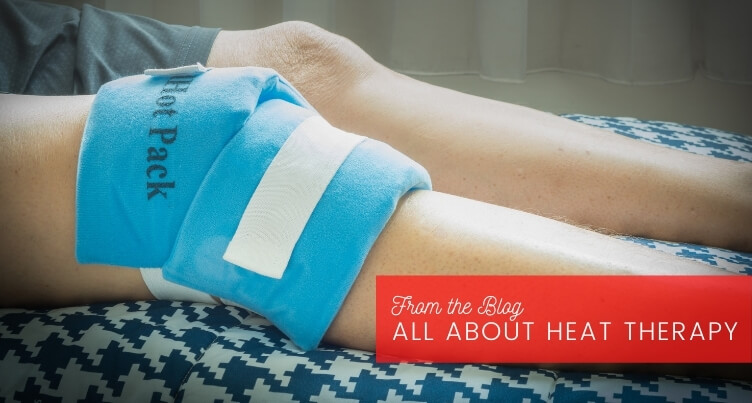 Last month we discussed when to use heat vs. ice therapy for pain. This month we’re going to deep dive into heat therapy, when to use it, for how long, and much more.
Last month we discussed when to use heat vs. ice therapy for pain. This month we’re going to deep dive into heat therapy, when to use it, for how long, and much more.
How it Works
When you warm up a sore joint or tight muscle, your blood vessels enlarge. This allows more blood, oxygen, and nutrients to be delivered to the injured tissues. Better circulation means more relaxation for those stiff muscles and joints.
When to Use Heat Therapy
For chronic pain such as arthritis, stiffness, muscle spasms, and some headaches, heat is a good option. Don’t use heat for swollen, bruised, or new injuries as it can increase inflammation.
Remember: heat relaxes. So when you feel that all-too-familiar pain caused by tension, feel like you need a massage, or just can’t seem to relax your muscles, try heat therapy. As an inexpensive, safe, at-home option, it’s truly one of the best.
Types of Heat Therapy
There are two types of heat therapy: dry heat and moist heat. Dry heat is an electric heating pad or sauna, whereas moist heat is a hot bath, steamed towels, or moist heating pack. While either type can be effective at easing pain, some think that moist heat helps the heat better penetrate the muscles and may provide better pain relief.
You may need to try different types of heat to determine which feels the best for your specific pain. Here are some options to try:
- Hot water bottle
- Electric heating pad
- Gel pack
- Heat wrap
- Hot tub
- Sauna
- Warm bath
*Note: Please be sure to use a barrier between the heat and your skin to avoid burns. Apply heat for about 20 minutes at a time and take a break of at least 20 minutes between sessions.
When Heat Therapy Isn’t Helping
If you’re not experiencing the relief you’d hoped for from at-home heat therapy, it may be time for a visit. It’s important to remember your structural health as well, so an adjustment, combined with heat therapy, may be just what you need. Give us a call today and we’ll get you on the schedule.